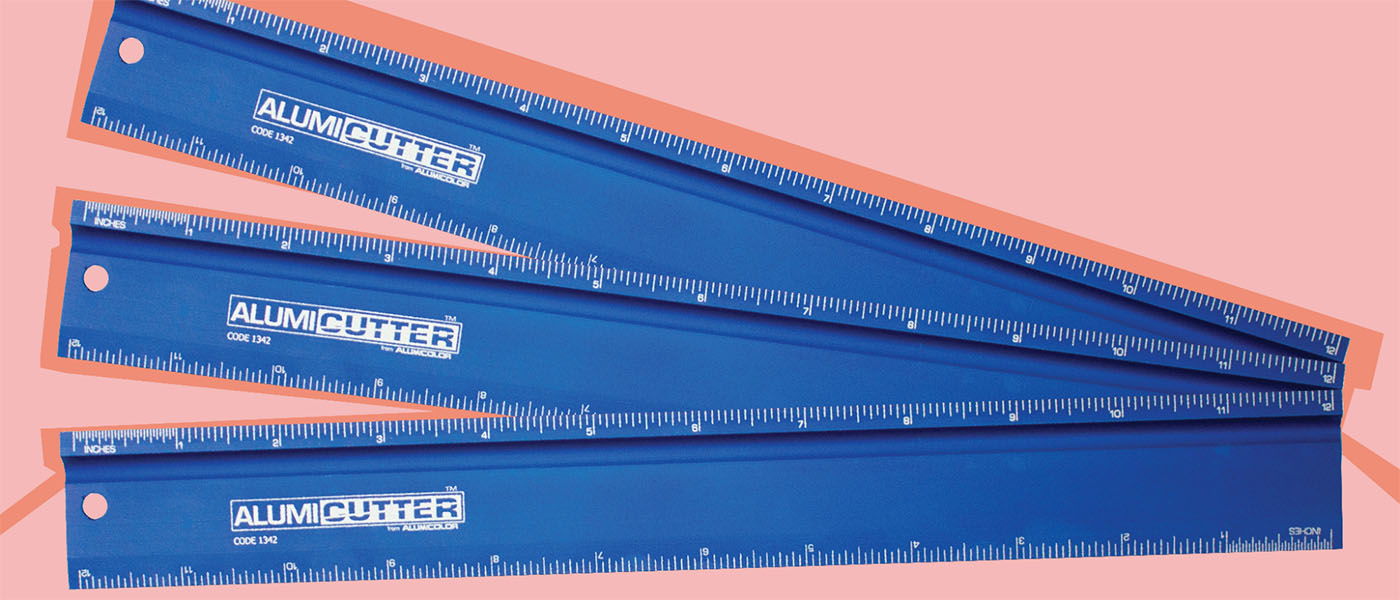
Types of Measuring Tools Everybody Needs
From the simplest elementary school project to the most complex interstellar rockets, we will always need measuring tools to complete the project. There are many measuring tools to choose from, some of which are universal, others that are very task specific.
A measuring tool uses standardized and internationally accepted units of measure to determine the length, width, height, weight, speed, distance or temperature of an object or person.
Types of measuring tools we use most often, some even without thinking about it, are rulers, tape measures, weight scales, thermometers, as well as odometers and speedometers in our vehicles. Others that are a bit more task-oriented include protractors and compasses, pressure gauges, calipers and levels.
Measuring Rulers for Artists, Crafters and DIY’ersThe Ruler
A marvel of simplicity and utility. A measuring ruler is essentially a straight flat object with units of measure permanently engraved, etched or printed on the surface. It can be a short one, like a 6” or a 12”, or a longer one measuring 3 feet, also sometimes referred to as a yardstick in America, or a meter stick for the rest of the world.
Rulers can be made of wood or plastic. Some can be clear with a grid pattern or metal with a slip-proof backing and a finger guard for cutting paper with a craft knife.

Rulers for Modeling
Some rulers are task and hobby specific, like the Model Railroad Ruler. The units of measurement on these rulers are scales or gauges. Using this specific type of ruler will allow you to use stainless steel tweezers to place parts of your train set in their exact location. To read more on how these rulers work and how to read them, check out our article: How to Read a Model Train Ruler.
Purchase Your Model Railroad Ruler to Perfect Your Train SetsArchitect Rulers or Architect Scales
Similar to a model train ruler, these rulers are marked in scales, but unlike conventional rulers, these are not flat. They’re triangular and have three edges with six surfaces on which scales are indicated. One of these can include up to 16 different scales for the architect or engineer to reference so they always have the right scale when needed.
Because architectural drawings are not drawn to scale but are a small representation of the very large building design and layout, architects use scales like 3/4, where ¾ of an inch is equal to one foot or ¾” = 1’.

Measuring Tape
Same principle as a ruler, but these differ in that they are flexible and can be rolled up or retracted into a housing. A sewer’s measuring tape is soft and usually about 3 yards long. In a tool shop or on a contractor’s belt, you’ll find heavier-duty metal tape rulers. These are usually much longer and can measure 16 or 25 feet. Made from steel, housed in heavy-duty plastic, and auto-retractable.

Machine Squares
Also known as Machinist Square or Engineer’s Square, these hardened carbon steel tools are used in alignment to check right angles or to set right angles. They come in many sizes to fit a number of projects and tasks.
These are an important tool because so many things in our everyday lives are set at the right angle; stairs, the walls of our homes, our floors, our furniture and so on.
Unconventional Measuring Tools
Some precision tools have a measuring tool or measuring scale built into the design so they are easier to use and enhance the process. Below are just a few:

Cutting Mat
They come with a grid printed right on the surface! Cutting paper, cardstock, vinyl, leather or fabric is so much easier when using the grid on a cutting mat. The entire surface is essentially a measuring tool. Use it to align the materials, space out and mark even cuts and more!

Plastic Clamps
Intended to hold items in place during a project, these plastic clamps also include imperial measurements so you can quickly see what the width of the item held is, no need to use a ruler here, this tool multi-tasks.
Your Hands and Feet
This is an old scouting trick, knowing the length of your index finger, your palm, arm or your foot could provide the necessary shortcut in guesstimating measurements when there is no other measuring tool in sight.